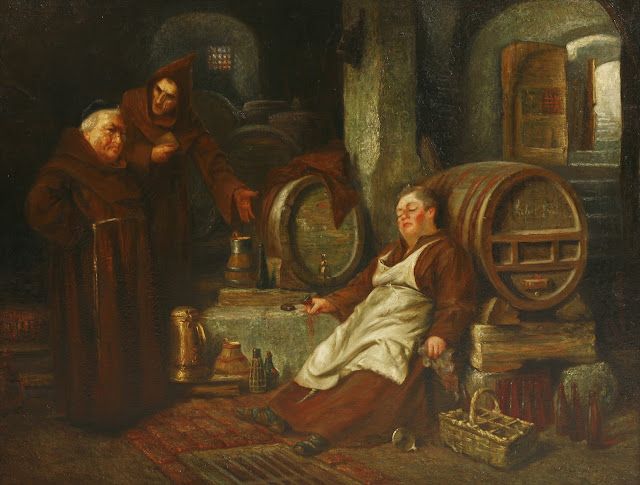The Unlikely Tale of Medieval Monks and Their Tipsy Adventures*
When we think of medieval monks, we often picture solemn figures clad in robes, devoted to prayer, scholarship, and asceticism. However, a closer examination of history reveals a surprising facet of monastic life: monks getting drunk! While it may seem paradoxical for these men of faith, alcohol played a significant role in their lives and communities.
A Historical Context
During the Middle Ages, particularly between the 5th and 15th centuries, drinking alcohol was a commonplace practice across Europe, transcending social classes. Water was often unsafe to drink, so many turned to fermented beverages like beer and wine. Monasteries became vital centers of brewing and winemaking, producing high-quality products not just for local consumption but also for trade.
Monasteries as Breweries
Many medieval monks were skilled brewers, using their resources to create distinctive and robust beers. The Trappists, a branch of the Cistercian Order, were particularly renowned for their brewing expertise. Monks would craft their beverages not only to sustain their communities but also to provide for the monastery’s needs. The profits from these operations could help fund charitable activities, education, and other essential services.
Rituals and Revelry
Drinking was not merely a means of sustenance; it also played a role in social and religious rituals. Feasts and celebrations were integral to monastic life, with wine and beer often flowing freely. These gatherings provided opportunities for fellowship and community bonding, breaking the usual routine of prayer and work.
In some instances, the festivities could lead to excessive drinking. Tales of monks indulging in hearty drinking contests or losing themselves in merriment are not uncommon. Chroniclers occasionally documented instances where monks found themselves quite inebriated, much to the dismay of their superiors.
The Paradox of Piety and Indulgence
The notion of monks getting drunk raises intriguing questions about the duality of monastic life. On one hand, monks were expected to uphold strict codes of conduct, emphasizing self-discipline and piety. On the other, the human experience is replete with contradictions, and even those dedicated to spiritual pursuits could succumb to earthly pleasures.
This duality often sparked debates among church leaders about the appropriateness of alcohol consumption in monastic life. Some reformers sought to curb excessive drinking, advocating for moderation and a return to stricter ascetic practices. Nonetheless, many monasteries continued to enjoy their brews, integrating them into their daily lives and celebrations.
Legacy of Monastic Brewing
Today, the legacy of medieval monks and their brewing skills persists in various forms. Many modern breweries trace their roots back to monastic traditions, and some continue to produce beer using recipes passed down through generations. The Trappist beers, in particular, are still highly regarded and produced in monasteries across Belgium and the Netherlands, adhering to the same principles of quality and craftsmanship established centuries ago.
Reflection
The image of monks getting drunk in the Middle Ages may challenge our preconceived notions of monastic life. Yet, this story reminds us of the complexity of human nature and the rich tapestry of history. Monks, while devoted to their faith, were also part of a broader societal context where alcohol played a vital role. So, the next time you raise a glass, consider the monks who may have paved the way for the brewing traditions we enjoy today, blending devotion with a splash of indulgence. Cheers!
 Reviewed by Admin
on
March 25, 2023
Rating: 5
Reviewed by Admin
on
March 25, 2023
Rating: 5


.jpeg)










No comments:
God bless you!